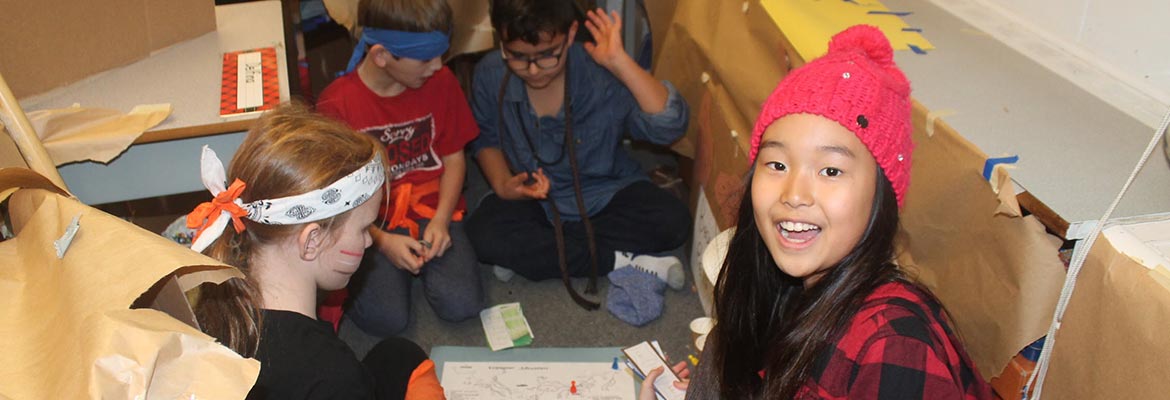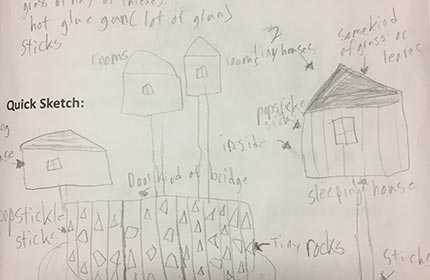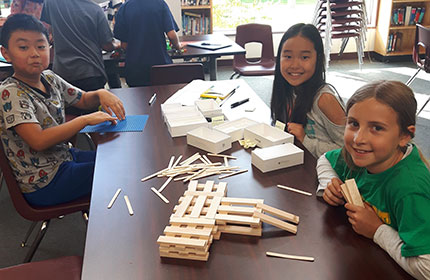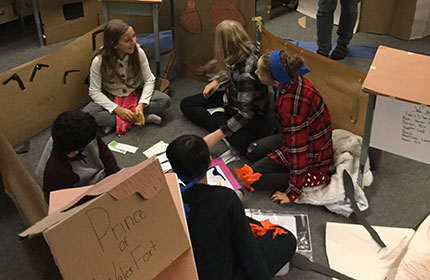Grade 4/5Connecting the Role of Explorers and Fur Traders with the Designing and Making of Forts
Core Competency Questions:
- How can I design a living game to communicate my learning about the land and people of Canada?
- How can I generate ideas using creativity and fact
- How can I design a prototype to show my learning?
The Context:
Through the lens of geography and building on our knowledge of explorers, we investigated how trading routes were established. We started with our knowledge of fur traders and reviewed their needs and roles in Canada’s history. Focusing in on the geography of Hudson’s Bay, we studied maps and chose real forts that were researched and later brought to life. Rivers were studied to learn the actual navigation routes. Through this information, we explored the role of natural resources to deepen our understanding of how geography impacted the development of these small fort communities. Students showed their understanding by creating their own forts, trade routes and relationships (explorers, voyageurs, First Peoples) and by reenacting roles and dressing up.
Teacher
“The students were invested in their learning…they were more personally connected to history. When they dressed up as voyageurs they really felt like they experienced it, even though they are young people from West Vancouver” -Janette Kim
Student Reflections
“… we could build a community with others.” -Keon
“I got to think about how hard it was for them to build an actual fort.” -Yuna
“It actually felt like we were back in the days and how hard it was.” -Sarah
“I thought it was really fun because we got to take a step in their shoes.” -Maegan
How did Fur Traders adapt and survive? Designing prototypes.
How did Fur Traders impact Canada’s history? Building forts.
How did Canada’s landscape impact trade and relationships? Reenacting the fur trade.
Curricular Competencies
- Social Studies 4- The pursuit of valuable natural resources has played a key role in changing the land, people, and communities of Canada.
- Social Studies 4- Uses primary sources and prior knowledge to plan and construct a fur trading post
- Career Education 4- Uses innovative thinking when solving problems
- Language Arts 4- Considers different purposes, audiences and perspectives in exploring texts, maps and oral information
- Fine Arts 5- Engaging in creative expression and experiences to expand a sense of identity and belonging
ADST connections
- ADST5- Reflect on their design thinking and processes, and their ability to work effectively both as individuals and collaboratively in a group, including their ability to share and maintain a co-operative work space



